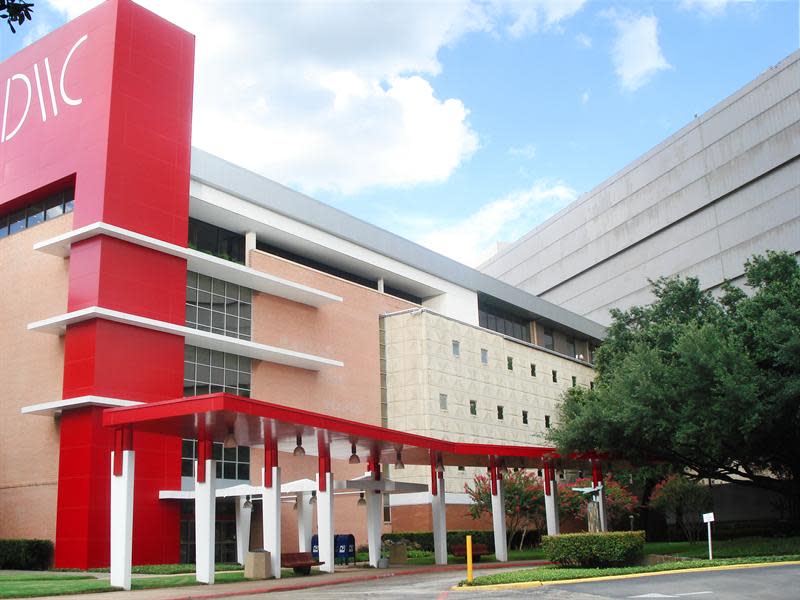What to Watch: Regional Trade Shows Gain Ground as National Events Seek to Evolve

Walking the aisles at a trade show has long been embraced by men’s wear retailers seeking seasonal trends and to discover new brands.
But like everything else in the fashion industry, the pandemic caused a major disruption in the trade show industry. Shows were canceled and reinvented virtually with varying rates of success. Brands reached out to retailers directly, sending swatches and hosting Zoom calls as a way to showcase their latest collections, and regional shows saw a marked rebound in interest and attendance as merchants opted to stick closer to home.
More from WWD
Although Informa Markets Fashion returned to an in-person show for its MAGIC and Project nameplates in Las Vegas in August, many of the big brands decided to sit it out and not exhibit. Ditto for a lot of the men’s retailers who had traditionally attended. An unfortunate overlap in dates with the Chicago Collective found merchants opting for the Windy City instead of Las Vegas with many influential stores following the designer and contemporary brands, as well as the European labels sponsored by the Italian Trade Commission, to the Midwest.
The situation continues to evolve this year. On Tuesday, Project canceled its January men’s-only show in New York, scheduled for Jan. 26 and 27. That follows the decision of Liberty Fairs in December to take a “pause” in its winter trade shows in New York and Las Vegas. Project’s decision was attributed to its attempt to “better serve the men’s wear community,” but was undoubtedly influenced by the skyrocketing cases of COVID-19 throughout the U.S. the past several weeks. Liberty’s cofounder Sharifa Murdock said she was taking time to “restructure” the show’s business model.
As of now, Informa plans to go ahead with the MAGIC and Project men’s and women’s shows in Las Vegas Feb. 14 to 16 as well as the Project show in New York in July. Agenda plans to return to Caesars Palace in Vegas on Feb. 15 and 16 and Man is returning to an in-person show in New York Jan. 26 to 28 in a new location, AG Studios in TriBeCa.
The Chicago Collective, scheduled for Feb. 6 to 8, is still going forward, as is the Dallas Market Center’s show Jan. 29 to 31. These regional shows continue to increase in importance since they’re generally less expensive for exhibitors and attendees and they focus on the higher end of the market.
The Chicago Collective in particular is garnering a lot of attention from exhibitors and retailers. The August show had a waiting list of exhibitors trying to get space within the 250,000-square-foot exhibition hall and attracted 1,200 buyers, according to Bruce Schedler, vice president of the Chicago Collective. “In my 24 years,” he said, “this was the best show we’ve ever had.”
He’s expecting the momentum to continue this year.
“We don’t want to be big, we want to be a good show. February 2020 was phenomenal when a lot of big brands joined us and the August show followed suit. It was very gratifying,” he said.
It also marked the debut of the Italian Trade Commission brands to the trade show floor in Chicago. For many years, the ITC had brought its brands to the Mrket/Project show in New York — Project’s then-parent bought the Mrket men’s show and merged it into Project a few years ago. Last January, before the pandemic, ITC brought about 30 companies to Project Digital, and there were 28 brands in Chicago.

WWD Staff
Schedler said the ITC will nearly double its brand roster in Chicago in February with more than 50 brands expected to exhibit, including Zanella, Lubiam, Corneliani and Boglioli.
Overall, some 370 exhibitors are expected to participate in the February show at the merchandise mart. He’s expecting retailers from every state as well as Canada, whose borders are now open. Although the bulk of the attendees are independent retailers, the majors have also been spotted at the show, including Macy’s, Dillard’s, Nordstrom and others, according to sources.
What the retailers who do attend won’t find there, however, is streetwear brands. “That’s not us,” Schedler said. “We picked our direction and it’s better men’s apparel.”
The Dallas Market Center is also prepping for a strong show at the end of this month.
The summer edition of the Dallas Men’s Show in August was the largest in its history, offering more than 700 brands — 143 of which were new — to a retail audience that had increased by more than 200 percent, 25 of whom attended for the first time.
The January show is expected to host 850 brands in both the permanent showrooms and the temporary space set up for the men’s market.
“Retailers are looking for efficiency,” said Cole Daugherty, senior vice president of marketing for the Dallas Market Center. “Their time is more precious than ever and they can get everything done here more quickly and see a range of categories in a marketplace that is easy to work.”
Among the brands that are being offered are Billy Reid, Psycho Bunny, Faherty and Tommy Bahama.
Eva Walsh, executive vice president of leasing for the Dallas Market Center, said brands such as these attract not only specialty stores but large stores such as Dillard’s, which has an office at the mart.

“Buyer traffic was traditionally regional with a narrow selection of brands,” Daugherty said. “But now that we’ve broadened our mix, we’ve seen growth from the Southeast and Midwest as well as the West and Northeast.”
But as popular as these shows are becoming, they are still a fraction the size of MAGIC, which brings thousands of exhibitors in a large array of categories to Las Vegas twice a year.
Kelly Helfman, president of Informa Markets Fashion, said she is “feeling positive” after August’s edition, which “proved we can do large-scale shows in a safe way. The feedback we got from brands and retailers was phenomenal and we feel comfortable going back to Las Vegas.”
Although she declined to provide numbers, she said there will be a “mix of new brands and traditional anchors” at the Convention Center in February.
She said that as the 800-pound gorilla of the trade show industry, MAGIC and its affiliated shows has always gone up against the regionals, “but we provide a different offering.” That includes a big women’s component, streetwear, footwear and sourcing exhibitors as well as a hefty educational offering from WGSN, Highsnobiety and others.
Helfman said she believes in the future of trade shows, although they need to evolve beyond what has been offered for decades. “That’s not the future,” she said. “We need to be much more innovative” by including digital options, marketing services and other assets considered valuable to today’s industry such as matching buyers with brands. “Face-to-face will be forever in fashion, but it’s no longer that traditional model, and anybody who continues on that path will struggle,” she said. “The number-one reason to go to a trade show is to discover new brands and that’s very hard to do outside live events.”
Peter Leff, executive vice president of wholesale for Tommy Bahama, is still a fan of trade shows, but won’t be exhibiting in Las Vegas in February. The company wasn’t there in August either.
“We have a substantial wholesale base so we’re very much an advocate of trade shows,” he said. But the smaller, regional shows are where the brand is focusing its attention for this year including Chicago, Dallas and Charlotte, N.C. “In talking to our accounts, they’re primarily going to Chicago,” he said. And while a few do plan on going to Vegas, Tommy Bahama will meet them in a hotel suite rather than on the trade show floor.
“There are a lot of real positives about Chicago,” Leff said. “They curate the brands so there aren’t a lot of bad ones. They’ve also got a good scenario with set-up and break-down, better food, seminars and Bloody Mary’s in the afternoon.” The show also attracts a lot of better specialty stores, which represent a significant amount of business for the brand.
He said Tommy Bahama may eventually return to show at Project, but it depends on retail attendance. And after showing at the Coterie women’s show last year, the brand is passing on that one too this winter. “It wasn’t as robust as we had hoped,” he said.
John Rossell, head of creative and marketing for AG, historically a large exhibitor at Project, hasn’t shown there since 2019 and won’t be returning in February. For the past two years, the brand has worked virtually to show its customers the new collections on Zoom augmented by sample shipments — and it’s worked well. “We found something that works for us so there’s no need to go back right now unless our audience comes back,” he said.
Rossell did acknowledge the “Zoom fatigue” that has set in and “we look forward to the day when we can meet in person again.”
Arkun Dumaz, president of North America for Mavi, was one of the brands that showed at Project in August and will be returning in February, albeit in “a smaller way. We did OK because we did our homework: we made appointments, and if you do that, you can have a good show.”
Even so, he believes regional shows in Chicago, Atlanta, Charlotte and others are gaining ground.
Ken Giddon, president of Rothmans men’s stores, has long been a proponent of trade shows. Although he chose Chicago over Vegas in August, he plans to attend both next month.
“Trade shows will always be around. In our business, they’re a necessity,” he said. “There’s nothing better than seeing, feeling and trying on clothes. And we don’t have the bandwidth to go to 50 showrooms.”
For him, he doesn’t think the trade show model needs to evolve dramatically. “The problem is that there’s too much supply in the trade show business and it needs to be consolidated with a reawakening of what retailers really need. They should worry a little less about the branding of the show and worry more about the efficacy of the experience for the retailers.”
Sign up for WWD's Newsletter. For the latest news, follow us on Twitter, Facebook, and Instagram.

